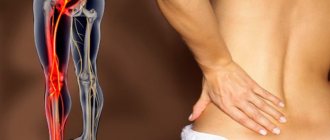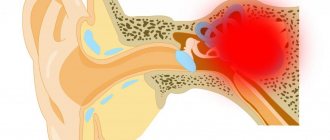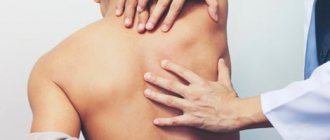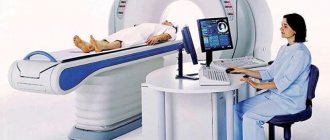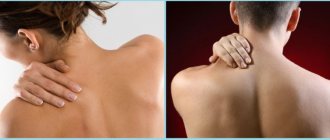The temporomandibular joint (TMJ) connects the lower jaw to the temporal bone. It allows the lower jaw to move, and a person to talk and chew food. If the muscles, cartilage and tendons are in order, movement does not cause any discomfort: it is a painless and natural process.
However, the TMJ is a very mobile joint, and like all mobile joints in the human body, it is susceptible to various diseases. Painful sensations, creaking, clicking when moving the jaw, as well as unreasonable congestion in the ears immediately indicate problems with the joint.
One of the most common diseases of the TMJ is arthrosis - a chronic pathology in which dystrophic changes occur in bones, connective and cartilage tissue. And here the use of osteopathy is not very effective, since it is almost impossible to return degenerative tissues to normal. But there are other conditions of TMJ when arthrosis has not yet developed, but symptoms of TMJ dysfunction are already present. And there is a fine line between these conditions, since clinically they manifest the same symptoms, and the presence of arthrosis can only be detected instrumentally (MRI, etc.).
Why do TMJ dysfunctions occur?
The causes of development are divided into two types: general and local.
- General ones are various kinds of infectious diseases, metabolic disorders, diseases of the endocrine system, which lead to inflammation of ligaments, muscles and cartilage tissue.
- Local injuries and excessive load on the articular surface of the head of the mandible. It can be “overloaded,” for example, due to the absence of lateral teeth, malocclusion and bruxism: strong clenching of teeth that occurs due to stress and psycho-emotional disorders. In addition, the condition of the TMJ is affected by our posture, problems with the cervical spine, and so on.
The TMJ is a paired joint and works synchronously. This is an incredibly harmonious and “delicate” system that fails relatively easily: it is enough to lose a couple of teeth, and the load on the joint will change, which will lead to the restructuring of connective and bone tissues. As a result, congruence of the articular surfaces occurs - a violation of articulation.
TMJ dysfunction - symptoms and treatment
There is no single, universal method for treating TMJ dysfunctions. Full treatment may be hindered by pain that does not allow the necessary therapeutic measures to be carried out.
Conservative therapy allows you to relieve acute manifestations of pathology, ensures the weakening or complete disappearance of symptoms and restores the function of the lower jaw in full.
Physiotherapy is effective in reducing pain. To reduce pain, fluctuarization is used in the TMJ area. The essence of the procedure is the use of alternating, partially or fully rectified low-voltage electric current with a chaotically varying oscillation frequency. Fluctuarization helps reduce pain after 2-3 sessions. If the myogenic nature of the pain is caused by myositis (inflammatory damage to the skeletal muscles) due to contact involvement of the muscle in the inflammatory process, then treatment should first of all be aimed at eliminating the cause of the inflammation.
Amplipulse therapy (sinusoidal modulated current therapy) has shown effectiveness in the treatment of myofascial syndrome (a chronic condition in which pain points form in muscle tissue), reducing the tone of spastically contracted muscles.
Pain of joint origin is treated by prescribing phonophoresis with hydrocortisone, which allows to relieve pain in the acute period and reduce inflammation.
All types of treatment must be carried out under the control of electromyography to assess the effectiveness, equalize and normalize the electrical potentials of the muscles.
During complex treatment, the patient himself must perform myogymnastics after proper training in the technique. It includes passive and active exercises for the moving muscles of the lower jaw and neck muscles. Passive exercises are carried out without load; the patient needs to perform various movements of the lower jaw. Active exercises also include various movements of the lower jaw, but with a load (the patient’s arms counteract the movement being performed) [3]. Exercises should be done 3 times a day for 10-15 minutes.
To normalize bite and occlusal disorders, special orthopedic treatment methods are used - correction of occlusion and the use of orthopedic structures (splints, mouth guards, bite blocks, myostimulation, etc.).
Surgical treatment methods are used for serious morphological pathological changes in the joint. The main indication for surgical treatment is anterior displacement of the intraarticular disc.
Surgical treatment consists of focal chondroplasty of the disc or head of the lower jaw using autologous cartilage (usually nasal cartilage). It is also possible to reduce the disc and suturing the stretched intra-articular ligaments and joint capsule. These methods are aggressive for a complex articular system and they do not always give good results [11].
In the complex issue of treating TMJ dysfunction, over time, the most effective scheme has proven to be the use of medication, manual therapy, physiotherapy and orthopedic treatment aimed at restoring the dentition and normalizing the bite.
What are the symptoms of TMJ dysfunction?
Dystrophic changes rarely develop in one day. This is a gradual process. Usually the initial stages are characterized by painful sensations: the masticatory muscles ache, the pain radiates to the temples and head, to the ears. Patients may confuse problems with TMJ with otitis media or toothache and often seek help from a dentist, who does not find any problems with the teeth, but detects incipient pathology of the joint.
Another characteristic sign is crunching and clicking sounds when yawning, chewing food, or talking. Then chewing and speaking becomes uncomfortable, and the patient begins to “protect” the jaw, reducing the amplitude of mouth opening. This leads to other problems: with the articulation of sounds, with chewing food. Due to the constant tension of the neck muscles, the head hurts more and more often, and the skin of the face may become numb.
Often the problem occurs after dental prosthetics. There is nothing surprising in this: the installation or removal of teeth leads to a redistribution of the load in the mouth, which can cause pain in the joint.
And all this can ultimately lead to tissue degeneration (erasure of cartilage) and stiffness of the TMJ - arthrosis.
Causes of throbbing pain in the temples
Throbbing pain in the temples can have many different causes, and therefore the approach to treatment will differ significantly. It is necessary to start with the fact that pain in the temples cannot be an independent disease and fighting only this symptom will be a pointless exercise. Throbbing pain in the temples can have a very diverse nature, but we can identify the main reasons for its formation and these include:
- Diseases of the cardiovascular system. The most common causes include atherosclerotic changes in the walls of blood vessels, which in turn lead to vascular disorders of an ischemic and metabolic nature in the nervous tissue of the brain.
- Infectious and inflammatory diseases of brain tissue. The most common infectious and inflammatory diseases of the central nervous system include: meningitis, encephalitis, ventriculitis and ependymatitis.
- Inflammatory diseases of the peripheral nervous system. In particular, neuritis of the facial or trigeminal nerve.
- Infectious and inflammatory diseases of the temporal arteries.
- Toxic damage to tissues of the central nervous system.
- Stressful situations and severe overexertion.
All of the above reasons may have a component in the clinical picture such as headache in the temporal region.
Local inflammatory diseases
Throbbing pain in the left or right temple can occur as a result of a unilateral inflammatory lesion, for example, with neuritis or arteritis. The inflammatory process leads to a reflex spasm of blood vessels in the area of the inflammatory process. which significantly impairs the trophism of surrounding tissues and causes ischemia. Ischemic damage leads to the formation of a pain syndrome localized in the area of damaged tissue, and inflammatory edema aggravates the situation. The cause of throbbing pain in the left temple is most often inflammation of the sensitive branches of the trigeminal nerve or inflammation of the facial nerve.
As for encephalitis and meningitis, these diseases lead to cerebral edema and a significant increase in intracranial pressure, which in turn forms a characteristic pain syndrome with localization of pain in the temporal regions.
Vegetovascular dystonia
The syndrome of vegetative-vascular dystonia, although not fully approved by many experts, still has a basis. Vegetovascular dystonia is a functional disorder. In which normal contraction of smooth muscle fibers cannot be carried out, a local increase in blood pressure may occur inside the vessels located in the brain tissue.
Pain in the temples of a vascular nature
In most cases, it is damage to the cerebral vessels that causes serious pain. Severe throbbing pain in the right temple may be associated with atherosclerotic lesions of the cerebral arteries belonging to the middle cerebral artery basin, less often the temporal artery itself. Since the brain has a complex nociceptive or pain system, when the baroreceptors located in the endothelium of the vessels are irritated, a severe pain syndrome is formed. Increased blood pressure in combination with atherosclerotic vascular lesions is the most common cause of throbbing pain in the temporal regions on both sides. Most patients note that when blood pressure rises, throbbing pain in the temples is often combined with pain in the back of the head. A one-sided headache with a predominant localization in any area of the head, in this case in the temporal region, is usually called migraine.
Osteochondrosis
One of the common causes of throbbing pain in the temples can be osteochondrosis of the cervical spine. Impaired mobility and configuration of the vertebrae leads to compression of the vertebral arteries and reduces blood flow through them. As a result of inadequate blood flow to parts of the brain, severe pain in the temples can occur. Almost always, such pain is accompanied by impaired coordination of movements and determination of the position of the body in space.
Oncological diseases
One of the symptoms of the development of malignant or benign neoplasms localized in the central nervous system may be the occurrence of pulsating or pounding headaches, especially when the tumor process is close to the cerebral arteries.
What to do if you have problems with TMJ?
Joint problems are diagnosed using MRI, radiography, and computed tomography. Treatment is carried out depending on the causes of dysfunction: if the cause is an infection, then the infection is treated and the inflammation is relieved. If the bite is incorrect, you need to contact an orthodontist. Painkillers help temporarily relieve pain.
Osteopathy is very helpful in eliminating the problem. Osteopathic manipulations are aimed at correcting the position of the lower jaw; they act directly on the muscles and ligaments, helping the bones and tissues “fall” into place. This is especially effective when working together with dentists, orthodontists, rheumatologists, and other doctors. In addition, the treatment of TMJ often requires correction of intraosseous tensions in the bones of the facial skull, hyoid bone, dysfunction of the cervical and thoracic spine, problems with internal organs, etc. Few people know, but in 2-3 cases out of 10 our posture depends on the position of the lower jaw and the TMJ.
Just one session with an osteopath in many cases helps reduce the intensity of pain by 80%.
Important points
The most common factors that provoke pain when opening the mouth are:
- Injuries. Mechanical damage is quite easily confused with manifestations of other dangerous ailments. Therefore, only a specialist can make an accurate diagnosis. There are several types of injuries: dislocation, jaw fracture, bruises. All these phenomena can cause pain when opening the mouth. Pathology can be eliminated only if the consequences of injuries are eliminated. In this case, patients are often prescribed surgical intervention.
- Purulent-inflammatory diseases. They affect the structure of bone tissue and are a typical cause of pain when opening the jaw. The most common representatives of these ailments are osteomyelitis, boils, and abscess. All of them are accompanied by the accumulation of a huge amount of pus in the gums and sharp pain in the jaw.
- Consequences of wearing braces. Such systems are prescribed to correct bites and eliminate other dental pathologies. They are quite effective and require long-term wearing. When used, many patients complain of some discomfort and pain when opening their mouth. Such phenomena are usually temporary and pass quickly. Similar symptoms can occur when installing removable dentures. If they do not disappear, you should immediately visit the dentist. Otherwise, dangerous consequences cannot be avoided.
- Neoplasms. They can be malignant or benign, and often cause pain when opening the mouth. The presence of tumors in the first stages occurs with mild symptoms; the patient may not even suspect that he has a tumor. With osteoma, the pain is not significant; it intensifies as the disease grows. Adamantioma has more pronounced symptoms; the disease is characterized by a significant enlargement of the jaw. This phenomenon causes severe discomfort when eating and talking. Only a specialist can distinguish a benign neoplasm from a cancerous tumor.
- Neuralgia. Discomfort may occur due to pinched nerves or inflammation. This pathology is accompanied by severe painful sensations that occur even during a period of rest and intensify when talking, eating, yawning, or blowing your nose. Such pathologies require immediate intervention by a specialist, otherwise the consequences may be irreversible.

